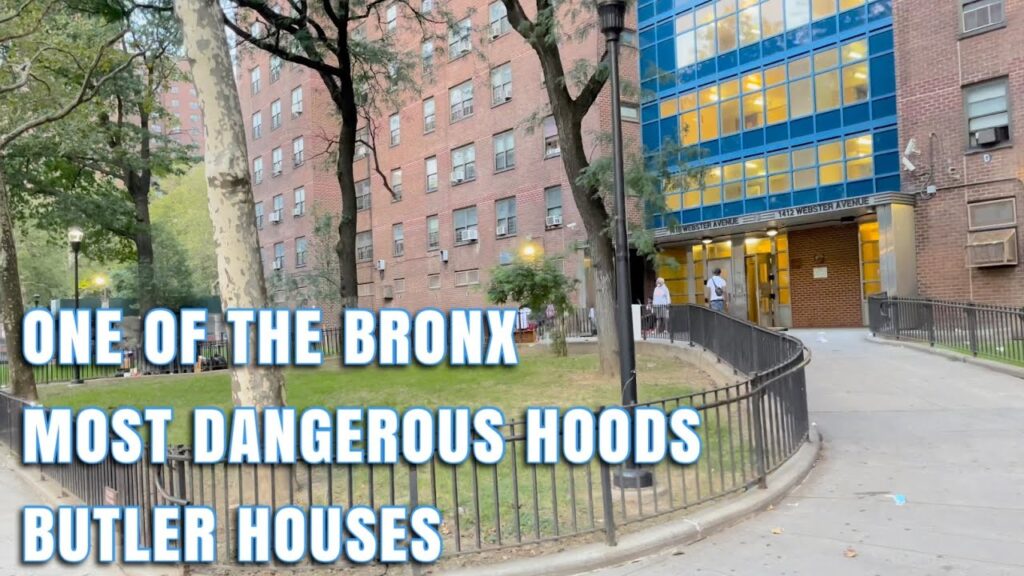The Cycle Renews…again
Only a few topics infuriate me to the extent I lose religion, raise my voice or curse. One of these triggering topics is the discussion of housing projects. A product of the Butler-Webster houses in Bronx, New York, I witnessed, and more importantly experienced, the result of well-intentioned but misguided social policy. The idea that housing may be provided en masse is a utopian vision that only enables failure, prolongs suffering, and helps only the administrators and their leftist handlers.
Before I go on, I felt the need to support this policy indictment with citations for the thinkers among you to review. Thus, this will have a slight academic feel.
But I must rant first: The theme of this is that there are these damn do-gooders who make problems worse. Their idea is that blending problematic peoples in the poverty class with the middle class will provide them with role models on how to elevate themselves out of their economic and social predicament. At every opportunity they work to get the ghetto family with a larcenous and combative disposition next-door to you–and me–so that our productiveness will “rub-off” and these dysfunctional cabals of criminals will see the error of their ways and pattern after us. The success rate of this social strategy foisted upon us is disastrously low.: 47 percent of families in New York City public housing have lived in their apartments for 20 years or longer and 18 percent have lived in the projects for at least 40 years (Husock, 2023). The idea that the housing project is a temporary condition that enables one to get on their feet and move on is bullshit.
Now that I have ranted, a more palatable discussion.
During the nineties, it became common for urban families to relocate or repatriate to the southern states, a reversal of the ‘great migration’. Some of it was the former southern residents who came north for opportunity who then cashed in their chips and went home. But much of it was the explosion of the crack cocaine epidemic in cities, and the associated crime and homicidal violence. Many of the single mothers in low-income housing sent their children south to save them from the problems. What happened instead was that this migration of families and besieged children transferred New York’s, Philadelphia’s, and Baltimore’s problems to Atlanta and Richmond and Texas and rural areas unprepared to deal with the surge in crime, violence, narcotics dealing and addiction. A cousin of mine who had moved to Atlanta remarked that when he got there it was heaven, and after the reverse migration Atlanta had similar problems to New York such as muggings on the public train system and growth of gang activity.
The streets don’t adapt to the environment; the environment adapts to the streets.
Urban theorist Jane Jacobs complained in her book, “The Death and Life of Great American Cities,” that government planners imposed their utopian vision on communities – and didn’t much consider the views of likely residents or neighbors.(Greenhut, 2024).
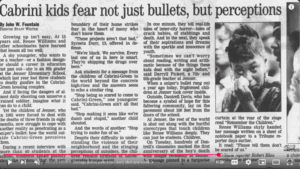 Until the mindset of the people changes, until the culture changes, no matter where you plant ghetto people, they will turn that area into a distressed neighborhood with gangs and crime. Even when in fancy houses, or newly built affordable housing, don’t tell me how good the neighborhood is, show me the crime rate; does your son have to be careful what color he wears outside? The culture of the ghetto that we will not let go of tends to follow the African American no matter how good the neighborhood or large the salary. We refuse to let it die, because we have become that it is the basis for black identity. How many rappers worth millions of dollars have been murdered or are incarcerated for their refusal to let the streets go (Nipsey, Popsmoke, Tupac, B.I.G., C Murder)? Same for the athletes who plainly fantasize about being hoodstars who get themselves into legal troubles (Michael Vick, Ray Lewis) or hood problems (Aaron Hernandez) worshiping street culture. Plenty of money, but the streets are in them, and as the expression goes, you can take the thug out the streets but you can’t take the streets out the thug. There has to be a cultural shift, a shunning of ALL of what is considered to be essential in black/ghetto culture (I put those two together because they are now intertwined, see one of my first essays “The Civil War We Lost”).
Until the mindset of the people changes, until the culture changes, no matter where you plant ghetto people, they will turn that area into a distressed neighborhood with gangs and crime. Even when in fancy houses, or newly built affordable housing, don’t tell me how good the neighborhood is, show me the crime rate; does your son have to be careful what color he wears outside? The culture of the ghetto that we will not let go of tends to follow the African American no matter how good the neighborhood or large the salary. We refuse to let it die, because we have become that it is the basis for black identity. How many rappers worth millions of dollars have been murdered or are incarcerated for their refusal to let the streets go (Nipsey, Popsmoke, Tupac, B.I.G., C Murder)? Same for the athletes who plainly fantasize about being hoodstars who get themselves into legal troubles (Michael Vick, Ray Lewis) or hood problems (Aaron Hernandez) worshiping street culture. Plenty of money, but the streets are in them, and as the expression goes, you can take the thug out the streets but you can’t take the streets out the thug. There has to be a cultural shift, a shunning of ALL of what is considered to be essential in black/ghetto culture (I put those two together because they are now intertwined, see one of my first essays “The Civil War We Lost”).
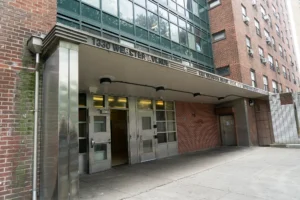
As shared in my autobiography, I grew up in a nuclear family, two parents and a younger brother. Our lives as far as I remember nested on Webster Avenue in the Bronx, in building 1330 (see image right). I remember the peeling paint that years later was found to contain poisonous lead (Smith, 2024) that allegedly caused behavioral problems in the children who supposedly tasted it (HUD), which I never did. I remember the hard brick walls, the institutional color schemes, the metal elevators and the doors that occasionally would give way and allow a vandal minded kid to fall down the shaft to their death (PIX 11). I also remember my building’s unique feature, a communal terrace hat offered a view of the neighborhood, sunsets, and even the George Washington Bridge with its rotating navigation light on top.
But I remember more vividly the crime and violence and dysfunction. The scams and scandals, the shootings and stabbings, the stench from the stairwell of urine, feces, and whatever was being smoked. I remember coming back from grocery shopping with my mother on Saturday morning like all the other families, and the hoodlums had deliberately broken the elevator so that they could then extort money by charging to help you carry your bags upstairs. I remember the pieces of paper tucked under the apartment door peephole knocker so if you looked out of it, your vision was obstructed to who was out there and what they were up to, and the lights in the hallways being knocked out to facilitate muggings; one victim was the father of the family next door to us, robbed in the hallway just outside the door to their apartment.
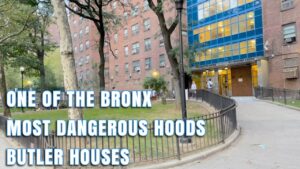 The Butler-Webster houses and housing projects across New York City consolidated the problems of society in camps where dysfunction was not repaired, but enabled, perfected, and then pushed out to surrounding areas. Instead of the middle class influencing the lower class, the opposite happened; the people of the neighborhood, especially young men, now had to contend with their peers who were street seasoned, rougher, violent, and even nihilistic. The only countermeasure to the gang is to create your own gang, and the street war is then afoot. The young people who were expecting to pursue the better side of society become victimized and must fight back. The adults and sociology majors failed them, even conspired against them, finding new ways to expose the good people to the bad; to remove the safety the young people needed to instead accommodate the troublemakers; to even the playing field not giving the dysfunctional access to a lifestyle they do not respect, that they then attack, thereby bringing everyone else down.
The Butler-Webster houses and housing projects across New York City consolidated the problems of society in camps where dysfunction was not repaired, but enabled, perfected, and then pushed out to surrounding areas. Instead of the middle class influencing the lower class, the opposite happened; the people of the neighborhood, especially young men, now had to contend with their peers who were street seasoned, rougher, violent, and even nihilistic. The only countermeasure to the gang is to create your own gang, and the street war is then afoot. The young people who were expecting to pursue the better side of society become victimized and must fight back. The adults and sociology majors failed them, even conspired against them, finding new ways to expose the good people to the bad; to remove the safety the young people needed to instead accommodate the troublemakers; to even the playing field not giving the dysfunctional access to a lifestyle they do not respect, that they then attack, thereby bringing everyone else down.
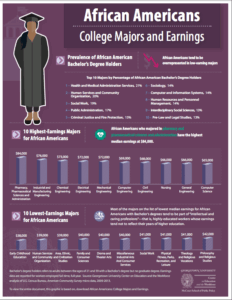
Instead of academic education, these youth are receiving criminal education. If educationally minded, instead of focusing on the skills for the future that would REALLY help their people, the STEM fields, the urban (black) youth aspires to be a social program administrator. Visiting my daughter’s school for homecoming weekend a few years back, I perused the football game program profiling the college’s team. Of the white players, almost every one of them was a science, technology, engineering, or mathematics major. One was even studying nuclear physics. Of the black players only a few were in the tough STEM fields, but plenty of sociology, sports medicine, public administration, other majors that while meaningful, are not where you want the majority of your young people, or young men for that matter.
Conducting my own informal poll, I chatted up a young man during the course of my day. He was attending John Jay School of Criminal Justice aspiring to become a lawyer. He said he wanted to help his friends, “. . . get out of some situations . . .” What more can be said? Even the aspirational among us are dedicated to the streets, not the other way around–he is influenced by them, not they influenced by he. His life goal is to help them survive in the streets, not help them get themselves out.
I’ve watched this over and over and over. At about age 16, my family left that housing project, to my delight, supposedly upgrading to a rent-controlled apartment. Nice new building, sizable rooms–but in a war zone area of the Bronx. Long story short, within a year, filth, crime, lasciviousness and blight. New neighborhood, same culture. The same for a set of beautiful high rise buildings that Bronx residents knew as River Park Towers.  The buildings were on waterfront property, self-contained with a school, supermarkets, a bus line extended to connect it to the #4 train for an easy commute, and it’s own station on the MTA Metro-North railroad. Unlike projects, the apartments were uniquely designed with spacious floor plans and non-institutional decor.
The buildings were on waterfront property, self-contained with a school, supermarkets, a bus line extended to connect it to the #4 train for an easy commute, and it’s own station on the MTA Metro-North railroad. Unlike projects, the apartments were uniquely designed with spacious floor plans and non-institutional decor.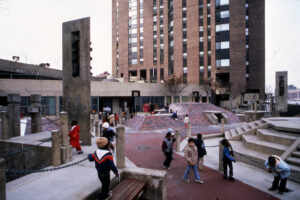 The was exterior beautifully finished, it looked–rich. Long story short, not even five years later after letting in them ghetto folk that liberal administrators love putting on posters for their virtue signaling, River Park Towers fell apart due to ghetto culture, drugs, gangs, and violence.
The was exterior beautifully finished, it looked–rich. Long story short, not even five years later after letting in them ghetto folk that liberal administrators love putting on posters for their virtue signaling, River Park Towers fell apart due to ghetto culture, drugs, gangs, and violence.
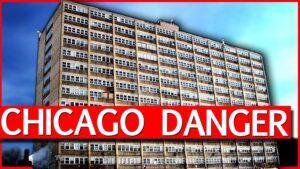
They do this across New York City, across the tri-state area, across the country. The infamous Cabrini-Green projects in Chicago, Pruitt-Igoe in Saint Louis, and of late, Watuppa Massachusetts (Husock, 2023a). The collection of progressives, liberals, and socialist democrats with a sprinkling of Marxists who are all becoming more difficult to tell apart, they dismiss the past results of these programs. Its their intentions that matter. Famed broadcaster Rush Limbaugh pointed out from time to time that liberals “don’t want to be measured by their results, it’s their good intentions that matter”.
Proof? Leftists erected a museum dedicated to housing projects.
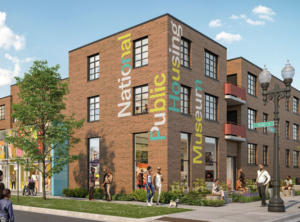
As has been the fantasy of public housing officials from the beginning, HUD bureaucrats believe that the right kind of public housing can cure the ills of the “severely distressed.” In this oft-disappointed belief, Hope VI is replacing many of the alienating high-rises that it is tearing down with more comfy town houses, and it seeks to get higher-income families to move into the new units along with the very poor, thinking that the more successful families will set a good example for the less successful. “Hope VI will strike a balance and create stable communities,” explains HUD deputy assistant secretary Milan Ozdinec, a career bureaucrat in the agency. “It has the very low income side by side with the family earning 60 percent of median,” he says. “That’s where connections are made, examples are set, and social capital built.” (Husock, 2023a)
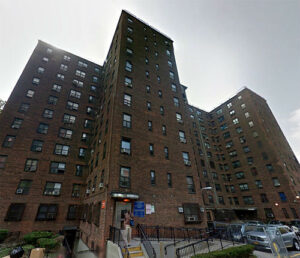
I found arguments from well meaning liberals that posited the benefits of housing projects, all of which were true–but not how you may think. They touted economic benefits to the neighborhood–yes for the supermarket that the residents don’t own or work at, the secondary businesses of which only a few of the residents of the area own or work at, and the businesses residents don’t want such as the twenty-four hour corner stores that project residents gather in front of. They touted the aesthetic benefit of new-looking building to improve the neighborhood’s image, and boasted helping these distressed people. But most shockingly, their scientific studies highlighted that crime was reduced by the presence of public housing projects. Yes, they said . . . reduced. Those of you, who like me, are intimately familiar with the public housing project, are being told, “you didn’t see what you saw. Move along.”
That study was conducted by Stanford University researchers (Diamond & McQuade, 2024).
And so, the do-gooders are setting about another attempt at this very concept in the Spring Creek former Starrett city complex. Erected in 1964 and operated as a rent-controlled cooperative, last summer Starrett City erected a GIANT sign at its main approach on Pennsylvania Avenue announcing that it would be converting to a Section 8 development, meaning that under a state legal code with that title, the buildings will adopt a housing project admissions standard. People on public assistance and the like, right next to the working and bill paying folks. You dumb ass working people, your representatives and senators with a (D) next to their name moved the ghetto you escaped from right back next to you, once again placing those who seek to put ‘the hood’ in their rear view mirror in direct contact with what they worked to get away from. Starrett was already starting to slip, but since this change the decline is speeding. A co-worker who resides there has related several accounts of behaviors that never took place before are now popping up: trash left in hallways and stairwells, unruly behavior on the grounds and in lobbies, the appearance of uncouth and surly individuals who antagonize and intimidate their neighbors.
The Liberal, the Progressive, and some Christians refuse to concede that their bleeding hearts repeat a pattern that continually kills the people they claim to want to help–poor black people. But they really do not seek to help–as popular psychologist Jordan Peterson points out often on YouTube, its not that they love the poor, its that they HATE the rich. Their efforts to help the poor are just efforts to disprove capitalism which they loathe. And so, they repeatedly create these false utopias with artificial rents that become shitholes of despair. Then they begin anew somewhere else, with their damned affordable housing lotteries that serve a double purpose: promoting the illusion that all of society is some sort of lottery picking winner and losers, and the unconscious notion that anyone who has more than you was a recipient of some special gift, and that is the fault of capitalism.
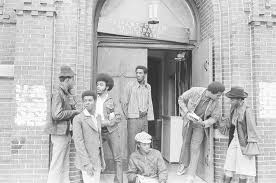 What helps a person is them EARNING their place. When a person earns something, they treasure it, they protect it, they care for it. People who work their asses off to get a home are very sensitive to a new neighbor who doesn’t cut their grass, throws big parties every weekend, and are visited by the police from time to time. Earning your place in a neighborhood creates a cohesive culture. When you import a person who has not earned their way in, maintaining the area or its culture is not a concern to them. Ask anyone who rents part of their home as an apartment, the tenant lack of concern to the condition of the space or neighborhood is maddening. Consider that the same problem that person is for them as the landlord, is also problematic for the entire neighborhood.
What helps a person is them EARNING their place. When a person earns something, they treasure it, they protect it, they care for it. People who work their asses off to get a home are very sensitive to a new neighbor who doesn’t cut their grass, throws big parties every weekend, and are visited by the police from time to time. Earning your place in a neighborhood creates a cohesive culture. When you import a person who has not earned their way in, maintaining the area or its culture is not a concern to them. Ask anyone who rents part of their home as an apartment, the tenant lack of concern to the condition of the space or neighborhood is maddening. Consider that the same problem that person is for them as the landlord, is also problematic for the entire neighborhood.
If you cannot tell by now, I hate these fucking people. They lie to the world about the potential of their precious affordable housing and ignore the history of cultural rot centered in their damned housing projects. I think these progressive administrators and politicians should be in jail with the vicious criminals they lovingly protect. Their conviction would be for creating a man-made disaster, the public housing project. But their defense will begin by blaming everything and everyone but themselves, “. . . it wasn’t funded properly . . .”, “The architect’s design was depressing and affected people’s psyche . . .”, and/or “The state gave up on it . . . before it could have an impact”.
And just when you think that rationale is dead, that we’re done with housing projects, some new young do-gooder who has no balanced research on what transpired before their young inexperienced life will join with other young do-gooders and in the shadows of a poetry bar will revive this horrible concept to inflict on another generation. Add to that the black politicians who seek to lay the predicament of the larger black community on everyone else but themselves and constantly give out freebies to buy votes but never deliver solutions. Voila, a movement for affordable housing is reborn, and the people you worked your ass off to get away from are once again your neighbors, moved in right next to you. Only difference, your stupid ass pays full rent, they get a free ride. Or, you pay a mortgage and they rent your neighbor’s basement. You are back in the environment you worked all your life to get away from, tethered to people you want no association with.
Affordable housing is a catchy campaign slogan; it is not effective social policy.
Diamond, R., & McQuade, T. J. (2024, July 26). Is affordable housing good for the neighborhood?. Stanford Graduate School of Business. https://www.gsb.stanford.edu/insights/affordable-housing-good-neighborhood#:~:text=The%20two%20studied%20affordable%20housing%20projects%27%20impact,down%20home%20prices%20and%20decreased%20racial%20diversity.
Greenhut, S. (2024, December 26). An idea so bad it was bound to return: Public housing. R Street Institute. https://www.rstreet.org/commentary/an-idea-so-bad-it-was-bound-to-return-public-housing/
Husock, H. (2023a, March 23). How Public Housing Harms Cities. City Journal. https://www.city-journal.org/article/how-public-housing-harms-cities
Husock, H. (2023, March 28). How New York can end the public housing trap. City Journal. https://www.city-journal.org/article/new-york-public-housing-trap
PIX 11 News. (2020, July 15). Elevator problems continue in Bronx NYCHA buildings. YouTube. https://www.youtube.com/watch?v=cVKZzpjly6c
Smith, G. B. (2024, March 14). New tests find that 9,000 apartments where children under age 6 live are likely contaminated – three times what the Housing Authority estimated in 2018. the revelations follow the scandal that put the nation’s largest public housing system under a federal monitor. THE CITY – NYC News. https://www.thecity.nyc/2020/10/22/nycha-lead-paint-more-apartments-identified/
U.S. Department of Housing and Urban Development (HUD). (n.d.). About lead-based paint. HUD.gov. https://www.hud.gov/contactus/lead-based-paint

